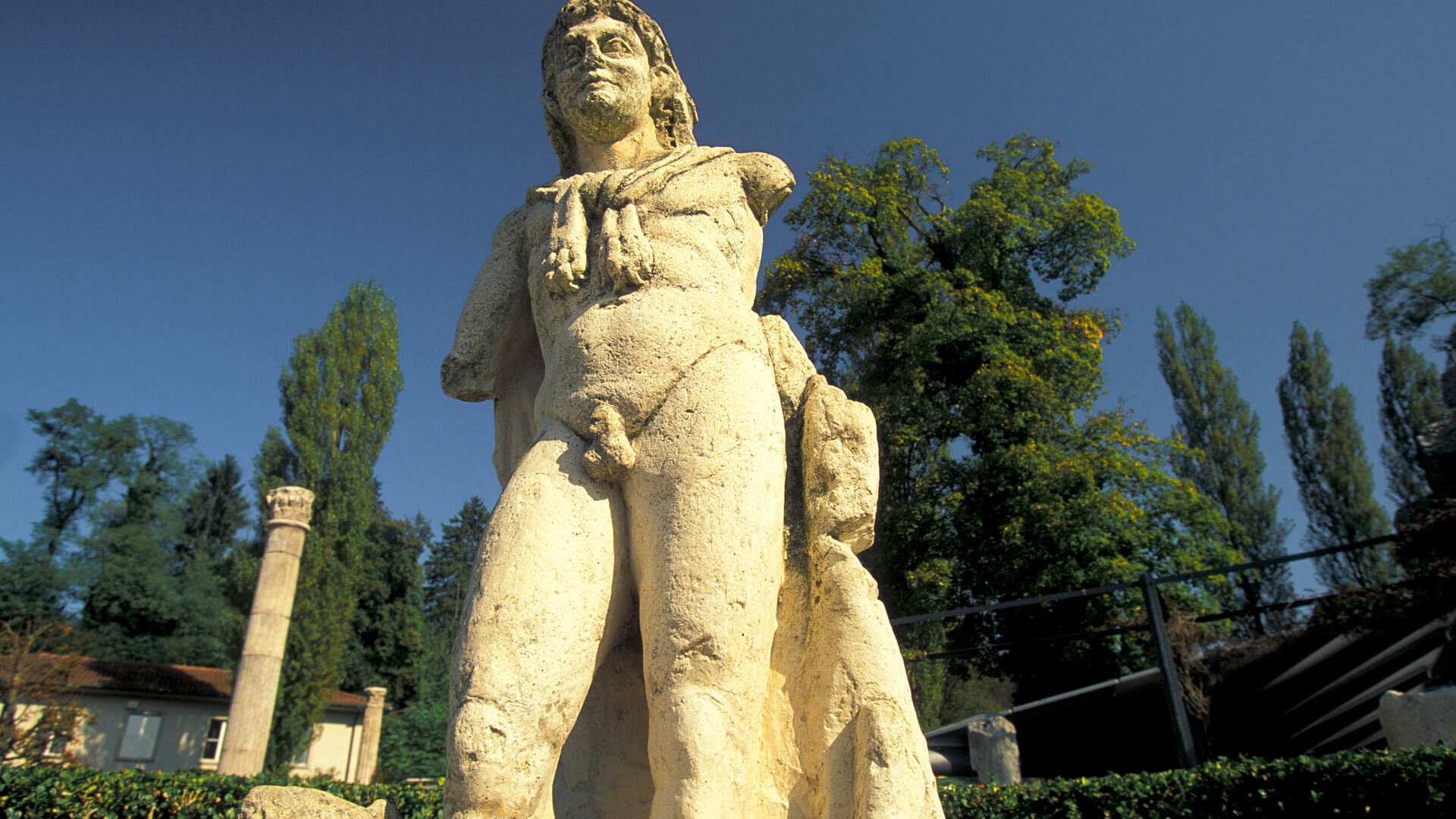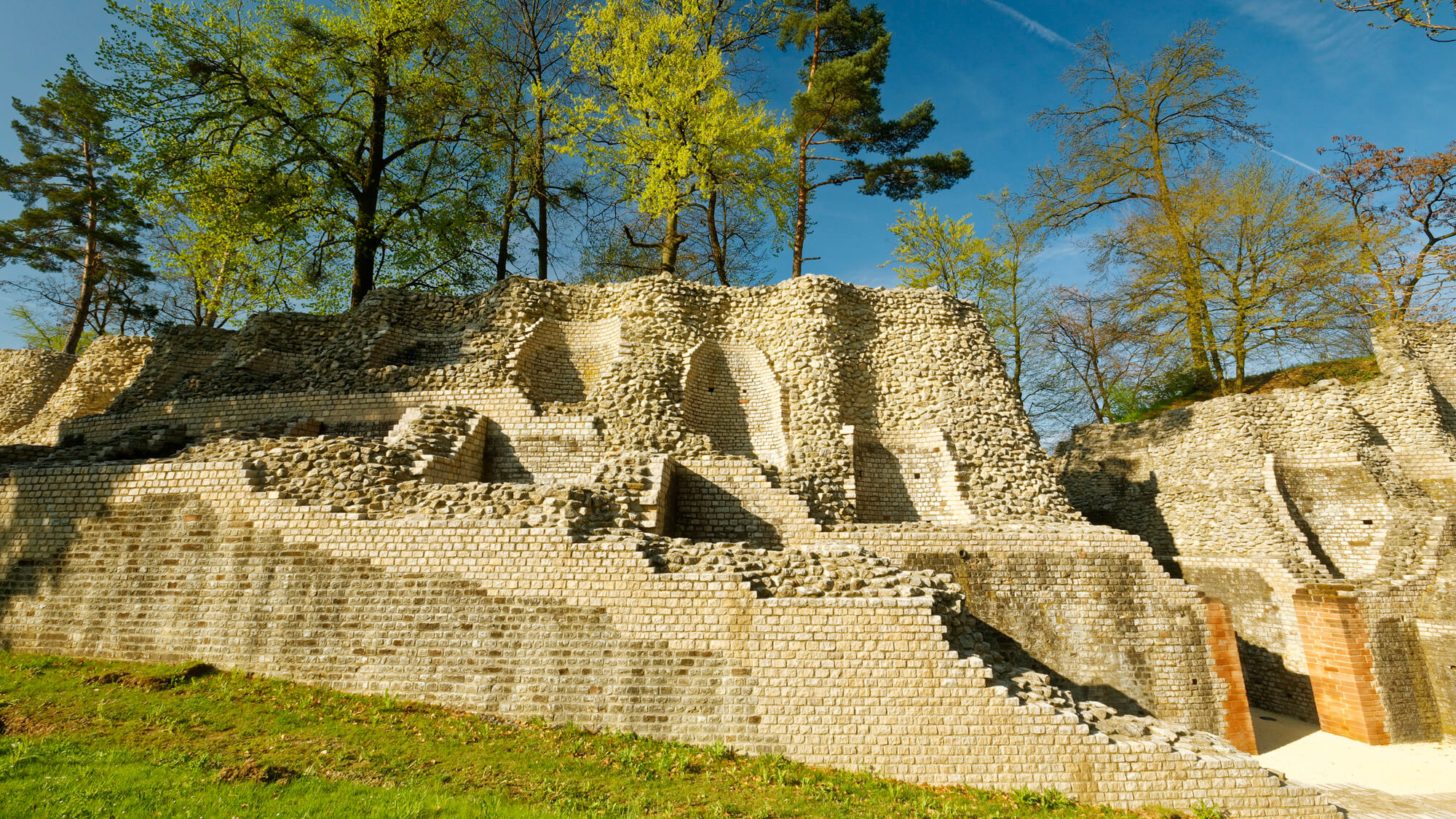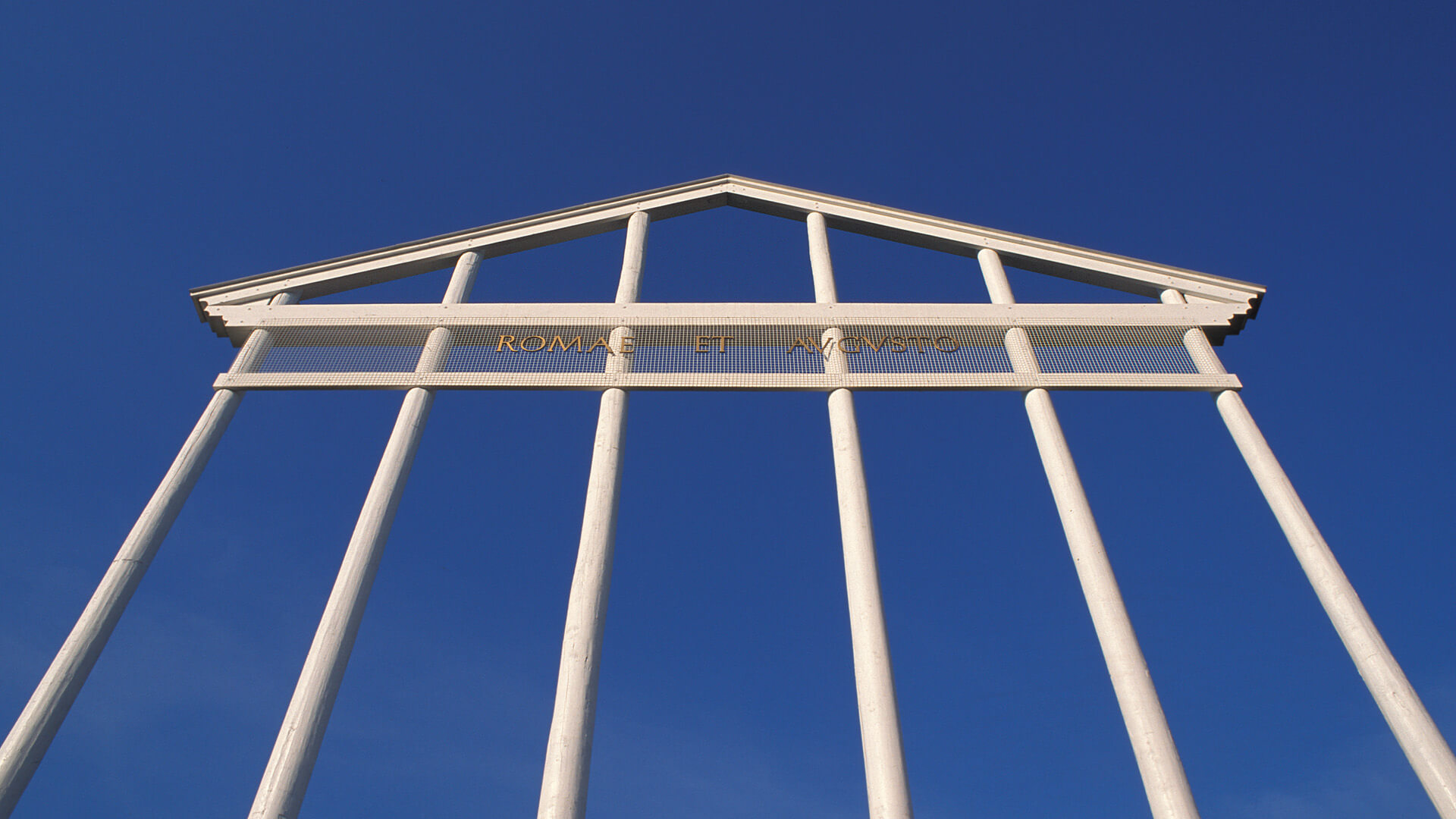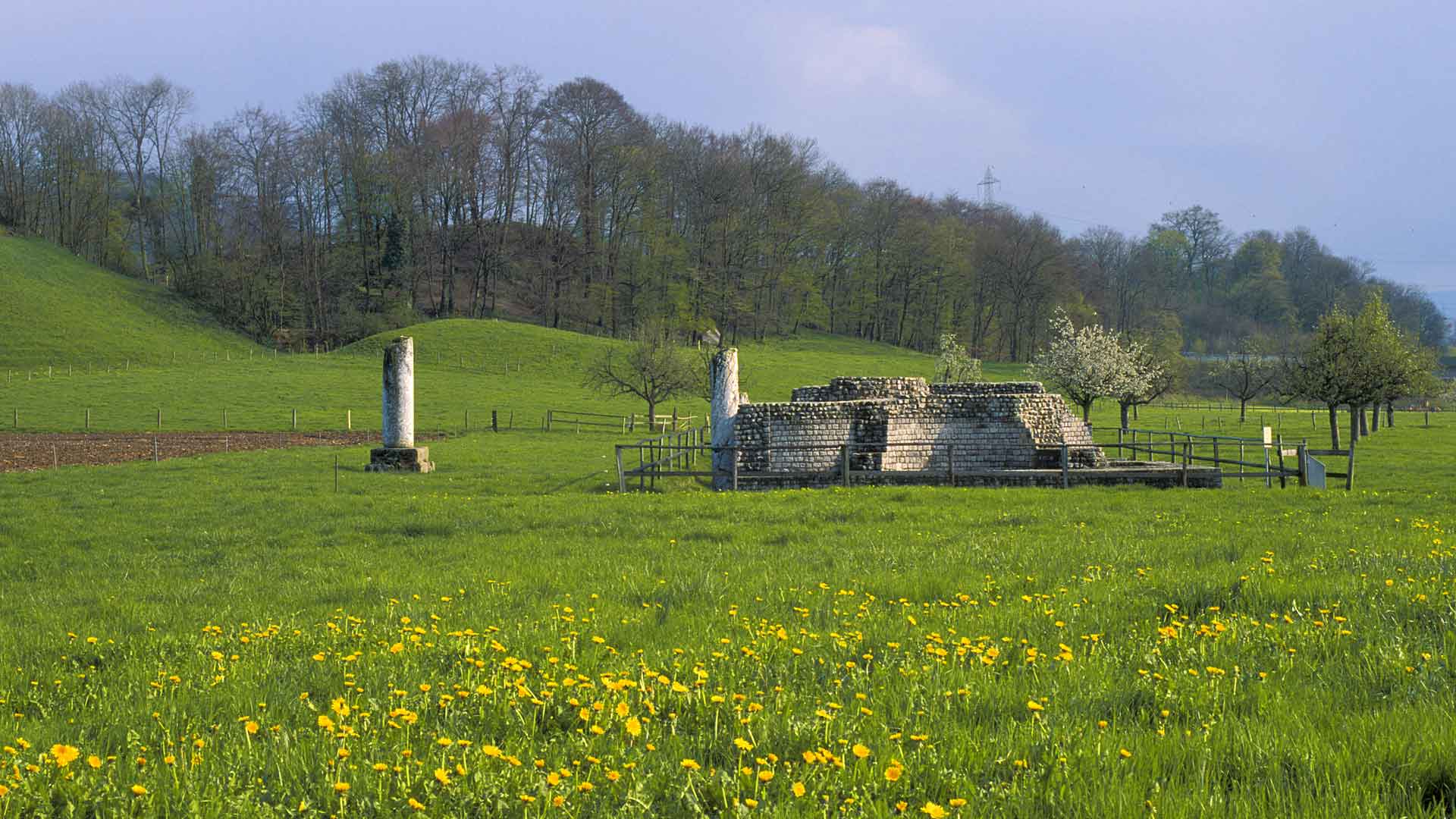Unter dem Schutz von Apollo
Mehrere Tempelanlagen sind bei den Ausgrabungen in der Römerstadt Augusta Raurica zum Vorschein gekommen. Sie belegen die starke Präsenz der Götterwelt im antiken Alltag. Der Feldherr Munatius Plancus hatte von Julius Cäsar kurz vor dessen Ermordung im Jahre 44 v. Chr. den Auftrag zur Anlage dieser römischen Kolonie auf dem Siedlungsgebiet der Rauriker erhalten. Unter Kaiser Augustus bekam die Stadt einen neuen Namen: Colonia Paterna Munatia Felix Apollinaris Augusta Emerita Raurica. Der Name weist auf die Bedeutung Apollos hin, unter dessen Schutz sich die Menschen stellten und der im Tempel in der Grienmatt verehrt wurde. Von der Verbindung der Kultur der hier ansässigen Rauriker mit den römischen Glaubensvorstellungen zeugen die verschiedenen, am Westrand und im Süden der Stadt errichteten gallo-römischen Vierecktempel. Imposant auch ein Heilbad, in dem eine Reihe von Gottheiten, unter anderem der Heilgott Aeskulap, verehrt wurde. Hier wurden unter Anleitung heilkundiger Priester sowohl medizinische Kuren als auch Gebete und Opferrituale durchgeführt.




